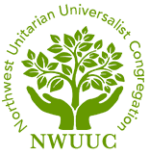About 1.2 billion people on the planet survive on roughly $1-$1.25 per day. For light and cooking, they usually rely on dirty energy sources, such as coal and kerosene, which are nonrenewable, harmful to human health and destroy the tree cover which preserves arable soil and protects homes from the ravages of floods and landslides.
A bright LED solar light that costs $10 and would pay for itself in three months is simply out of reach for this population. It would be like asking us to pay $1000 for a light bulb. Fortunately, many organizations have started focusing on this huge problem. Simply put, how can the poor raise the money to purchase clean energy for cooking and light and improve their lives? One effort promotes clean energy businesses for people through donations from family elsewhere that work. Also effective in this market are microloans, as referenced in Al Gore’s Earth in the Balance in OGT last week.
See these links for some real optimism about overcoming energy poverty and saving the environment we all share:
Ending Energy Poverty. Kerosene and charcoal in Haiti.
Can microfinance sector help deliver clean energy?
Microfinance and Energy Poverty: Findings from the Energy Links Project.
